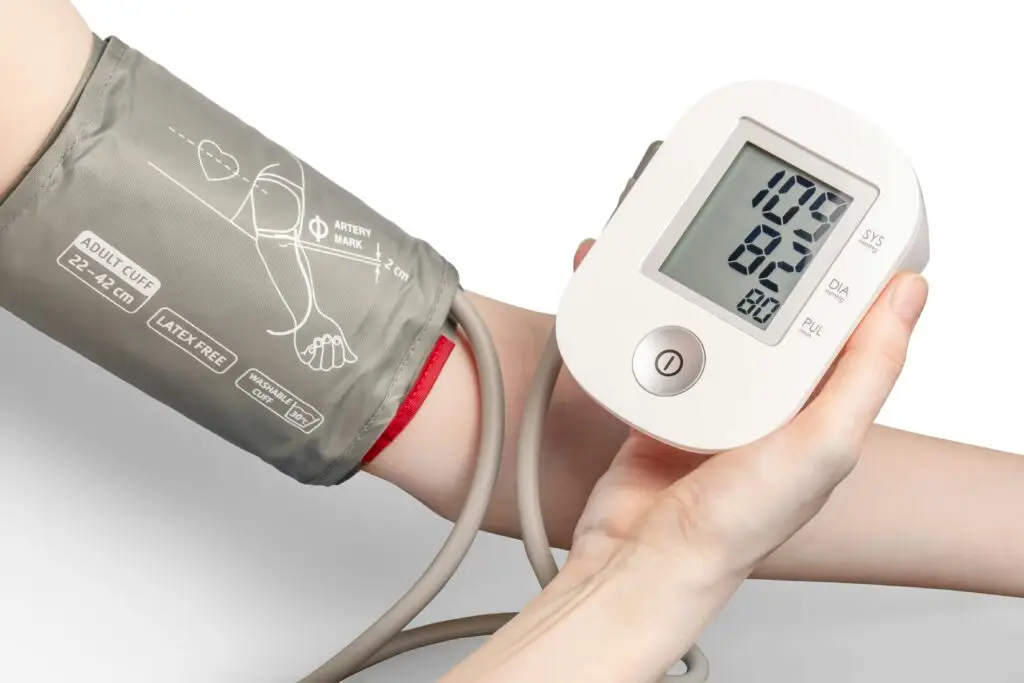
Mobility abnormalities refer to any changes or issues that make it hard for someone to move around easily, whether that’s walking, running, or even simple tasks like standing up. These problems can show up as unusual walking patterns, known as gait abnormalities, or broader issues like movement disorders that affect coordination and balance. For example, a person might limp, shuffle their feet, or have trouble keeping steady, which can lead to falls or fatigue.
Mobility disorders often stem from how the brain, nerves, muscles, and bones work together, and when something goes wrong, it disrupts normal movement. This can happen at any age, from kids learning to walk to older adults facing wear and tear. Understanding these issues is key because early help can improve quality of life, letting people stay active and independent.
In many cases, mobility abnormalities tie into specific conditions, such as periodic limb movement disorder, where legs twitch during sleep, or extrapyramidal and movement disorders that involve unwanted jerks or stiffness from brain signal problems.
These abnormalities might come from various factors, including:
- Genes, where inherited traits cause conditions like certain types of dystonia.
- Illness, such as infections or chronic diseases that damage nerves.
- Injury, like a sprain or fracture that alters how someone walks.
- Other physical abnormalities, for instance, joint problems or muscle weaknesses that build up over time.
Causes of Movement Abnormalities
Movement abnormalities often start when the body’s systems for controlling motion get disrupted. This can happen suddenly, like after a stroke that affects brain areas responsible for balance, or slowly, as with degenerative conditions where nerves wear down. For instance, in gait abnormalities, a person might develop a wobbly walk due to inner ear issues that mess with equilibrium, making every step feel uncertain. These causes aren’t just physical; sometimes, mental health factors like stress can worsen symptoms, though they’re not the root. Overall, recognizing the cause helps in tailoring support, from meds to exercises.
In more detail, chronic illnesses play a big role, where ongoing inflammation in joints leads to stiff movements over years. Injuries, on the other hand, might cause immediate changes, but if not addressed, they can become long-term habits in how someone moves. Genetic factors add another layer, passing down tendencies for disorders that show up early or later in life.
Here are some main causes :
- Neurological issues, such as Parkinson’s disease, which slows movements and causes tremors.
- Musculoskeletal problems, like arthritis that makes joints painful and limits range.
- Traumatic events, including head injuries that impair coordination.
- Metabolic imbalances, for example, low vitamin levels affecting nerve function.
- Infections, such as those targeting the brain or spinal cord, leading to weakness.
Factors Affecting Mobility
Several elements influence how mobility abnormalities develop or worsen, going beyond just the initial cause. Age is a big one, as older people might lose muscle strength naturally, making disorders more noticeable. Lifestyle choices, like lack of exercise, can speed up these issues by weakening supporting muscles. Environmental factors, such as uneven surfaces at home, increase risks for those already struggling. Additionally, medications for other health problems sometimes side-effect movement, creating a cycle that’s hard to break. Addressing these factors early through simple changes can make a difference in managing symptoms.
On a deeper level, psychological aspects, including anxiety about falling, can make someone move more cautiously, which over time alters their natural gait. Combined with physical wear, this creates compounded effects. Nutrition also matters, as poor diets lacking key nutrients can slow healing from injuries or illnesses.
Key factors include:
- Aging processes, which reduce flexibility and increase fall risks.
- Obesity, adding extra strain on joints and altering balance.
- Poor footwear, leading to improper foot placement and gait changes.
- Chronic pain, causing people to favor one side and develop uneven movements.
- Hormonal shifts, especially in women during certain life stages, affecting bone density.
Types of Mobility Abnormalities
Mobility abnormalities come in various forms, each with unique signs that affect daily life differently. Gait abnormalities, for one, involve odd walking styles, like a stiff-legged march from muscle tightness. Movement disorders might include involuntary actions, such as twitches in periodic limb movement disorder that disrupt sleep and daytime energy. Extrapyramidal and movement disorders often feature rigid muscles or dance-like motions from basal ganglia issues in the brain. These types aren’t isolated; someone could have a mix, like balance problems alongside tremors, making diagnosis tricky but important for targeted care.
Exploring further, some types are more about speed, like slowed steps in bradykinesia, while others involve excess, such as hyperactivity in chorea. Mobility disorders can also be sensory-based, where numb feet lead to unsteady steps. Understanding the type helps predict progression and choose interventions.
Common types:
- Ataxic gait, marked by wide, unsteady steps from coordination loss.
- Spastic gait, with stiff, dragging legs due to muscle overactivity.
- Parkinsonian shuffle, short steps with reduced arm swing.
- Dystonic movements, twisted postures from sustained contractions.
- Myopathic waddle, side-to-side sway from weak hip muscles.
Movement Abnormalities in Children
In kids, movement abnormalities often link to how their bodies grow, especially bones and muscles during rapid development phases. From a pediatric view, these issues might appear as delayed milestones, like not walking by 18 months, due to immature nervous systems.
Bone development growth plays a crucial role; for example, if leg bones grow unevenly, it can cause limping or in-toeing, where feet turn inward. This is common in toddlers as they build strength, but persistent problems might signal cerebral palsy, where brain signals misfire, affecting muscle tone. Pediatricians use growth charts to track height, weight, and motor skills, spotting deviations early. These charts help compare a child’s progress to norms, revealing if bone growth lags, perhaps from nutritional gaps or genetic factors.
Further, illnesses like viral infections can temporarily halt normal movement, while injuries from play might cause lasting gait changes if not rehabbed. In bone development, phases like the toddler years see bowlegs naturally straighten, but abnormalities persist if there’s underlying rickets from vitamin D lack.
Main points on causes:
- Developmental delays, stemming from premature birth impacting muscle coordination.
- Genetic conditions, such as muscular dystrophy weakening limbs over time.
- Neurological events, including birth trauma affecting brain-motor links.
- Orthopedic issues, like hip dysplasia altering joint alignment.
- Environmental influences, for instance, limited space restricting practice walking.
Movement Abnormalities in Adults
Adults face movement abnormalities often from accumulated life experiences, like wear on joints or sudden health events. Gait abnormalities might emerge as a hesitant step from fear of falling, common in those over 65. Movement disorders, including extrapyramidal types, can arise from long-term meds or diseases like multiple sclerosis, eroding nerve insulation. Mobility disorders in this group frequently tie to lifestyle, where sedentary habits weaken muscles, exacerbating issues. For example, periodic limb movement disorder might worsen with age, linked to iron deficiencies or sleep apnea, causing daytime fatigue and unsteady walks.
In detail, chronic conditions dominate, with heart problems reducing endurance for movement, or diabetes damaging nerves in feet. Injuries from falls or sports linger, altering biomechanics permanently if ignored.
Causes in points:
- Degenerative diseases, such as osteoarthritis eroding cartilage.
- Vascular issues, like strokes interrupting brain signals to limbs.
- Metabolic disorders, including thyroid imbalances slowing reflexes.
- Traumatic injuries, from accidents causing scar tissue restrictions.
- Medication side effects, particularly antipsychotics leading to tardive dyskinesia.
Diagnosis and Treatment
Diagnosis
- Medical history review, asking about symptoms onset and family traits.
- Physical examination, checking gait, balance, and muscle strength.
- Imaging tests, such as MRI to view brain or joint structures.
- Blood work, testing for infections or nutrient deficiencies.
- Neurological assessments, like EMG for nerve function.
Treatment
- Medications, to manage symptoms like tremors or pain.
- Surgical options, for severe cases like deep brain stimulation.
- Assistive devices, including canes or braces for support.
- Lifestyle changes, such as diet improvements for better energy.
- Therapies, combining speech or occupational for full function.
Physiotherapy
Physiotherapy offers practical ways to handle mobility abnormalities by focusing on exercises that build strength, improve balance, and retrain movements. Sessions might include walking drills or stretches to ease stiffness, helping people regain confidence in daily activities. It’s especially useful for gait abnormalities, where therapists guide proper foot placement to prevent falls. Overall, it empowers individuals to manage their condition actively, often reducing reliance on meds.
Most Asked Questions
- What is the difference between gait abnormalities and movement disorders?
Answer: Gait abnormalities focus on walking issues, like limping, while movement disorders cover broader problems, including tremors or involuntary actions that affect any body part. - Can mobility disorders be prevented?
Answer: Yes, through regular exercise, healthy eating, and avoiding injuries, though genetic ones might not be fully preventable. - How does periodic limb movement disorder affect daily life?
Answer: It causes leg jerks during sleep, leading to poor rest and daytime tiredness, which can worsen other mobility issues. - Are extrapyramidal and movement disorders reversible?
Answer: Some are, with early treatment, but others need ongoing management to control symptoms. - When should I see a doctor for mobility problems?
Answer: If changes last more than a few weeks, cause pain, or lead to falls, seek help promptly to rule out serious causes.

